Our official English website, www.x-mol.net, welcomes your
feedback! (Note: you will need to create a separate account there.)
Few-Layer WS2–WSe2 Lateral Heterostructures: Influence of the Gas Precursor Selenium/Tungsten Ratio on the Number of Layers
ACS Nano ( IF 15.8 ) Pub Date : 2021-12-20 , DOI: 10.1021/acsnano.1c08979
Di Wang 1 , Zhengwei Zhang 1 , Bolong Huang 2 , Hongmei Zhang 1 , Ziwei Huang 1 , Miaomiao Liu 1 , Xidong Duan 1
ACS Nano ( IF 15.8 ) Pub Date : 2021-12-20 , DOI: 10.1021/acsnano.1c08979
Di Wang 1 , Zhengwei Zhang 1 , Bolong Huang 2 , Hongmei Zhang 1 , Ziwei Huang 1 , Miaomiao Liu 1 , Xidong Duan 1
Affiliation
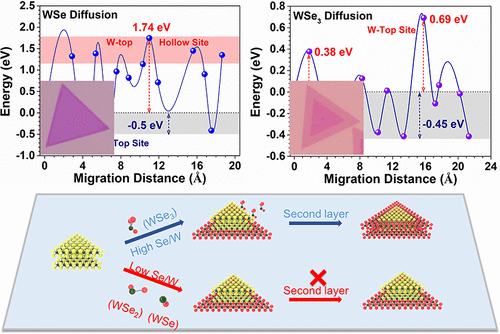
|
Two-dimensional (2D) lateral heterostructures based on transition metal dichalcogenides (TMDCs) attract great interest due to their properties and potential applications in electronics and optoelectronics, such as p–n rectifying diodes, light-emitting diodes, photovoltaic devices, and bipolar junction transistors. However, the studies of 2D lateral heterostructures have mainly focused on monolayer nanosheets despite bilayer heterostructures exhibiting higher performance in many electronic and optoelectronic devices. It remains a great challenge to synthesize lateral heterostructures with few layers. Here, we report the growth of bilayer–bilayer (bl–bl), bilayer–bilayer–monolayer (bl–bl–mo), bilayer–monolayer (bl–mo), monolayer–bilayer (mo–bl), and monolayer–monolayer (mo–mo) tungsten disulfide (WS2) and tungsten diselenide (WSe2) lateral heterostructures. The selenium/tungsten (Se/W) ratio of WSe2 precursor powders and the growth atmosphere can be changed with the extension of annealing time, which influences the layer number of the heterostructures. More bilayer WSe2 epitaxially grows at the WS2 edge with short annealing time (high Se/W ratio), and more monolayer WSe2 grows at the WS2 edge with long annealing time (low Se/W ratio). The density functional theory (DFT) calculations provide an in-depth understanding of the growth mechanism. This report expands the 2D material lateral heterostructure family, which gives impetus to their applications in electronics and optoelectronics.
中文翻译:

少层 WS2–WSe2 横向异质结构:气体前体硒/钨比率对层数的影响
基于过渡金属二硫化物 (TMDC) 的二维 (2D) 横向异质结构因其在电子和光电子学中的特性和潜在应用而备受关注,例如p-n整流二极管、发光二极管、光伏器件和双极结晶体管。然而,二维横向异质结构的研究主要集中在单层纳米片上,尽管双层异质结构在许多电子和光电器件中表现出更高的性能。合成具有几层的横向异质结构仍然是一个巨大的挑战。在这里,我们报告了双层-双层(bl-bl)、双层-双层-单层(bl-bl-mo)、双层-单层(bl-mo)、单层-双层(mo-bl)和单层-单层 (mo–mo) 二硫化钨 (WS2 ) 和二硒化钨 (WSe 2 ) 横向异质结构。WSe 2前驱体粉末的硒/钨(Se/W)比和生长气氛可以随着退火时间的延长而改变,从而影响异质结构的层数。更多的双层 WSe 2在 WS 2边缘外延生长,退火时间短(高 Se/W 比),更多的单层 WSe 2在 WS 2生长边缘退火时间长(低硒/钨比)。密度泛函理论 (DFT) 计算提供了对生长机制的深入理解。本报告扩展了二维材料横向异质结构家族,推动了它们在电子和光电子领域的应用。
更新日期:2022-01-25
中文翻译:

少层 WS2–WSe2 横向异质结构:气体前体硒/钨比率对层数的影响
基于过渡金属二硫化物 (TMDC) 的二维 (2D) 横向异质结构因其在电子和光电子学中的特性和潜在应用而备受关注,例如p-n整流二极管、发光二极管、光伏器件和双极结晶体管。然而,二维横向异质结构的研究主要集中在单层纳米片上,尽管双层异质结构在许多电子和光电器件中表现出更高的性能。合成具有几层的横向异质结构仍然是一个巨大的挑战。在这里,我们报告了双层-双层(bl-bl)、双层-双层-单层(bl-bl-mo)、双层-单层(bl-mo)、单层-双层(mo-bl)和单层-单层 (mo–mo) 二硫化钨 (WS2 ) 和二硒化钨 (WSe 2 ) 横向异质结构。WSe 2前驱体粉末的硒/钨(Se/W)比和生长气氛可以随着退火时间的延长而改变,从而影响异质结构的层数。更多的双层 WSe 2在 WS 2边缘外延生长,退火时间短(高 Se/W 比),更多的单层 WSe 2在 WS 2生长边缘退火时间长(低硒/钨比)。密度泛函理论 (DFT) 计算提供了对生长机制的深入理解。本报告扩展了二维材料横向异质结构家族,推动了它们在电子和光电子领域的应用。





















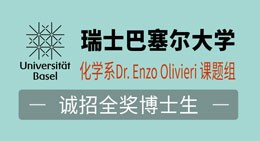
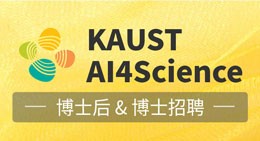

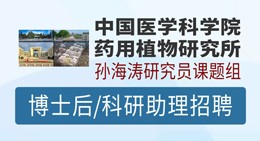




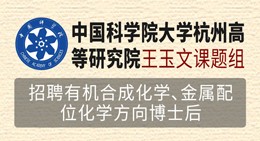



 京公网安备 11010802027423号
京公网安备 11010802027423号